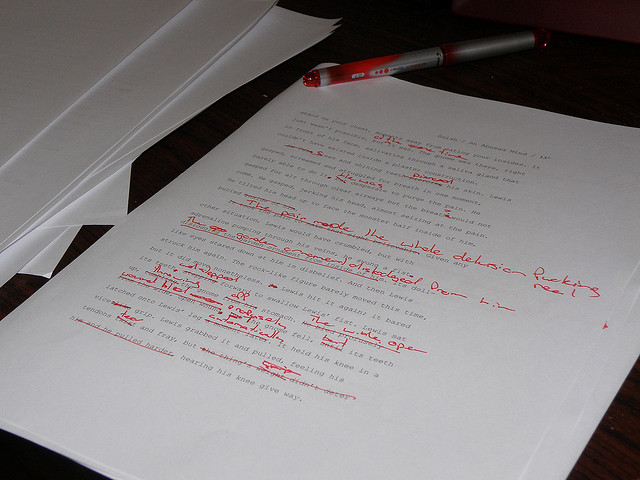In the past few months, I’ve been working on a rewrite for my agent. She enjoyed the manuscript and thinks it has great potential. Being the awesome agent that she is, she told me about the elements she loved, but also about the ones that—if tweaked—could make the story better. I think this is awesome, and I welcome the advice with eagerness and enthusiasm, because I know she wants the novel to be the best that it can be, and wants to increase the chances of it catching an editor’s eye.

I have, today, completed a second round of changes, and it is time to do a final read before sending it back to her for another objective review. So I thought I’d share my proofreading process with you.
Whenever I’m at this stage, I sometimes wish I could forget my novel and read it for the first time. That level of unbiased examination would be priceless, but alas, it is impossible. So what else can be done, realistically?
Well, there is the option of putting the manuscript away for a few months (as Stephen King suggests in his book On Writing: A Memoir of the Craft.) But who has that kind of time? I really wish I did, but nah. So, moving on . . .
One thing that many authors do is print that baby and read it, keeping a red pen handy. They do it because putting your novel on paper gives you that feeling of finality. This is it. I’m done. I’m so sure of it that I’m willing to kill a few trees to prove it. Of course, we all know it ISN’T done, and you’re going to get your money’s worth out of that red pen 🙂
This is a great option. Printing your ms really works, much better than going over it in Microsoft Word (or editor of choice.) Sure, it would be easier to correct the inevitable mistakes you will find if you were right there in your word processor but, the fact is, you tend to miss many mistakes that way. Why? Not really sure, but I think it’s the fact that—in paper—you’re going over your work more as a reader than a writer. If you think about, the word processor is the tool for creating your world and, in my opinion, proofreading demands a different format than the one you write in. You need a change to unbalance you and make you look at the words differently.
Yeah, printing your ms works but, for me, there’s a similar, yet better way. And it is the method I’ve used for the final proofread of all my indie novels—novels that have received zero complaints in the grammar department. Moreover, since this method prevents me from killing trees, wasting ink, hauling a large stack of papers around, getting red ink stains in my pockets . . . well . . . I really, really like it.
So instead of printing my ms, I do the next best things: I read it in my ereader!
The first time I tried it, I wasn’t sure if it was going to work, but now I wouldn’t do it any other way. For me, reading my ms on the kindle feels as final as doing it on paper. It’s a reader’s format—not an author’s one. Just like in paper, I can take notes and highlight problems for later correction. But what is best of all, and such a timer saver, I can copy and paste my notes to insert them in my manuscript later! And it’s this capability which makes this option absolutely the best.
So there. Try to proofread your manuscript this way. You might love it as much as I do.
*** Coming soon . . . posts on how to transfer your ms to your Kindle & copy and paste the notes you take there
[Image attribution: Photo by Benjamin Solah, used under CC/ No changes]
